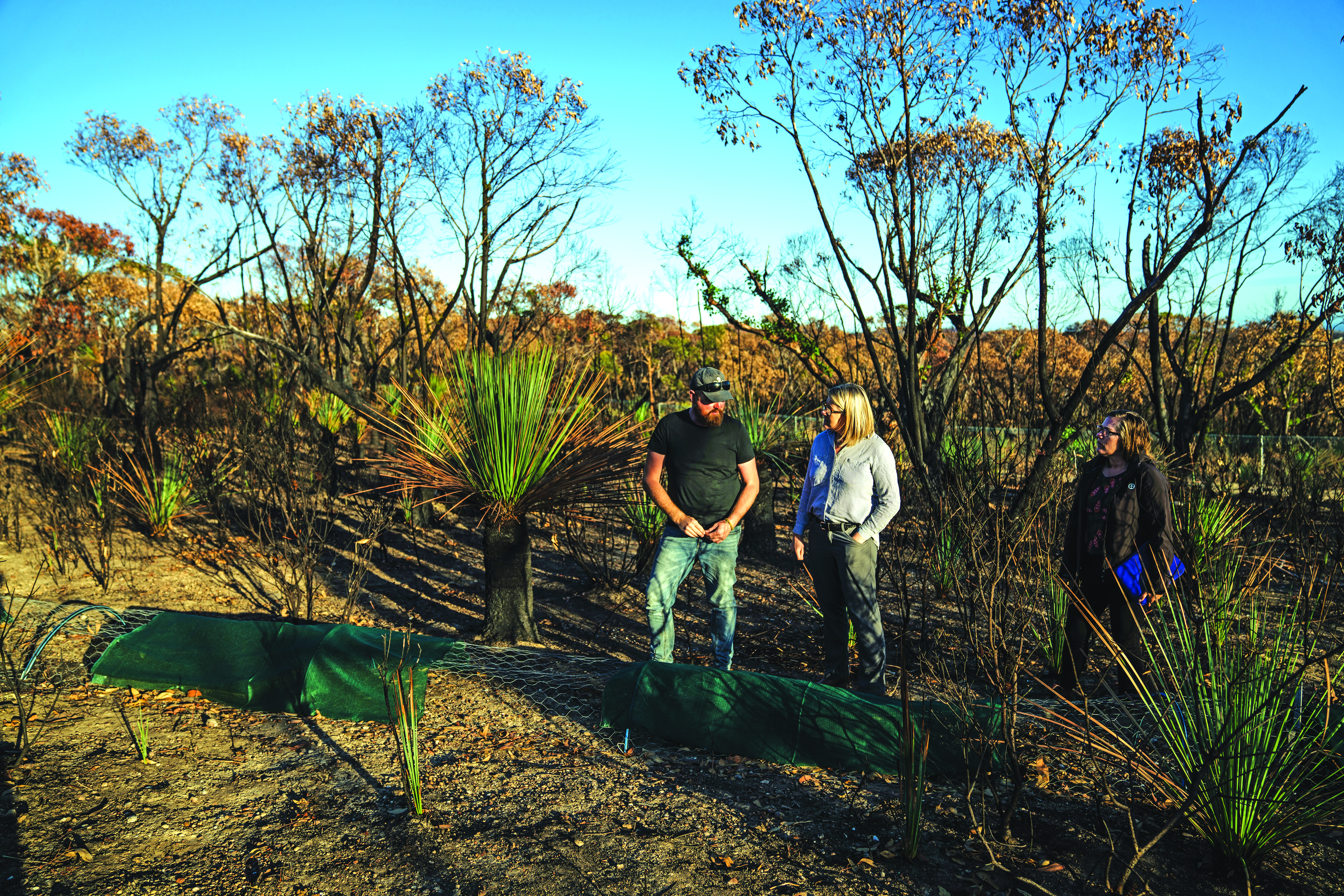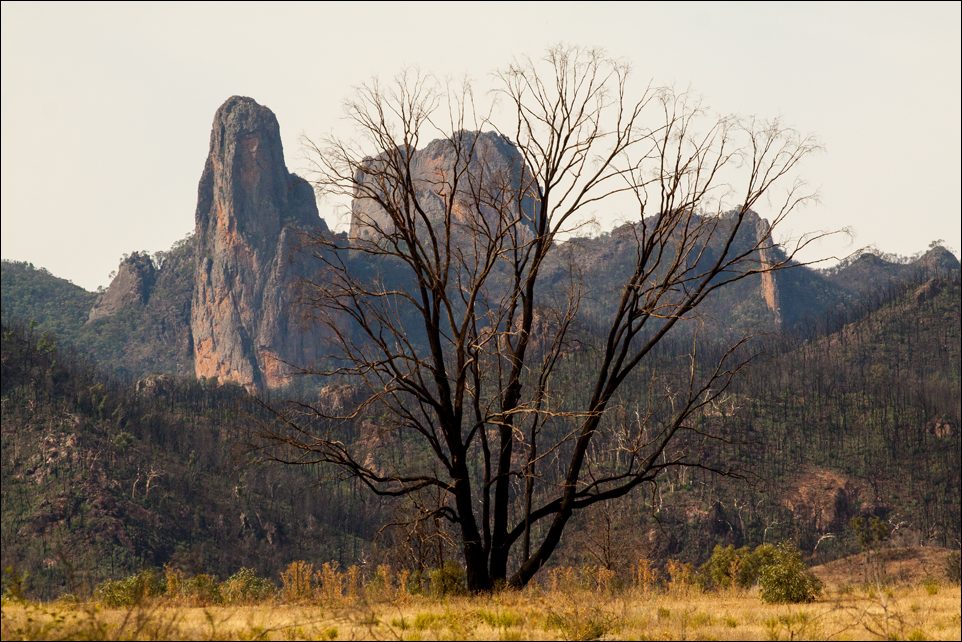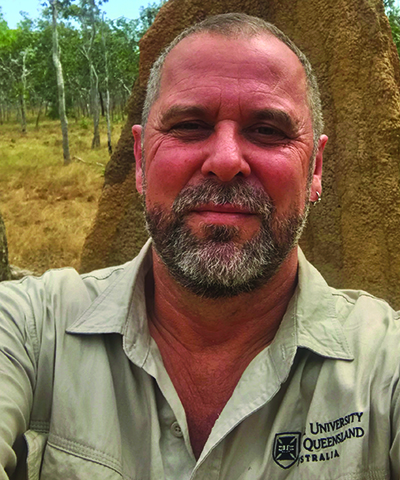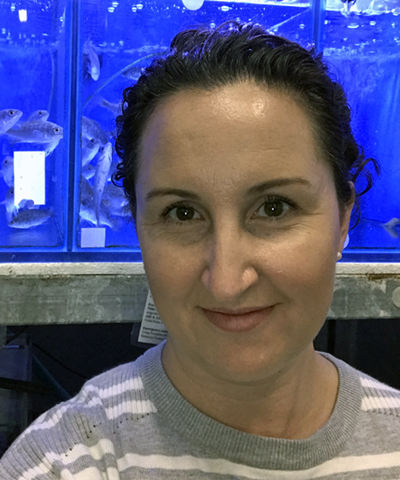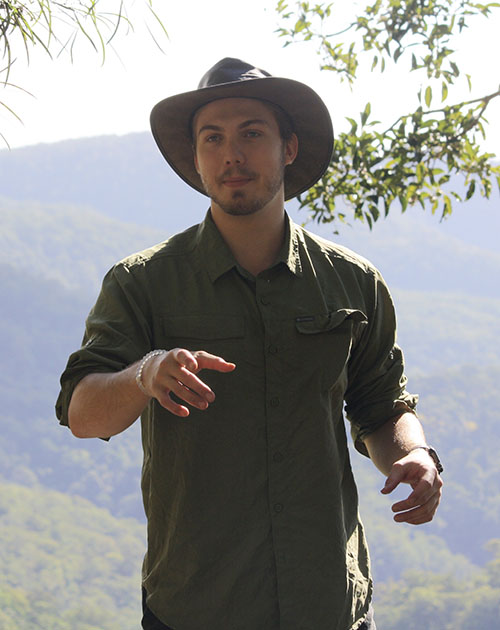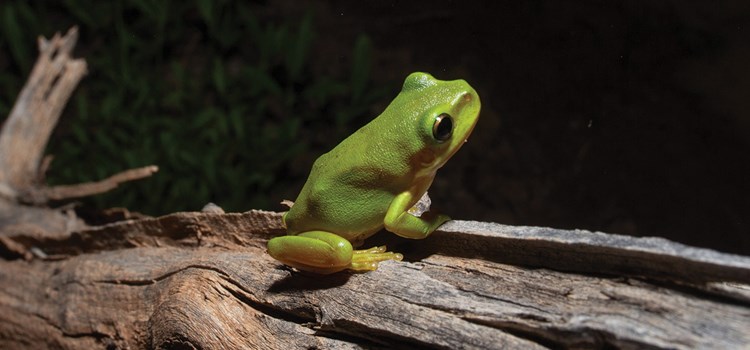
Project: 8.3.7
Impacts of post-fire ash and run-off sediment on Australian freshwater aquatic fauna
Project Leaders: Craig Franklin
Research in Brief
This project will examine how Australian freshwater fish, frogs, and invertebrates are affected by acute and chronic exposure to post-fire water quality changes such as elevated temperature, low oxygen levels, and ash and sediment run-off.
The research is needed in the aftermath of the 2019–20 wildfires as the threshold tolerances of freshwater aquatic animals for ash and sediment loads in Australian waterways are unknown. The results will inform waterway management and environmental flows, such as guiding: when to redirect run-off away from waterways; when to increase flows to dilute sediment slugs or to ensure that they move through sensitive habitats before they can adversely affect animal health; and when to undertake preventative population relocations to protect animals until waterways recover.
Why is the research needed?
Ash, sediment, and unburnt organic matter that gets washed into waterways following heavy rainfall in the aftermath of intense forest fires can rapidly strip waterbodies of oxygen. It can also increase levels of nutrients (phosphates and nitrates), increase cloudiness (turbidity), and leach potentially toxic chemicals (like polycyclic aromatic hydrocarbons, or PAH) into the water.
In addition to these acute inputs, the loss of riparian vegetation around waterbodies and the deposition of ash and fine sediments can alter thermal conditions, reduce water depths, and smother vegetation. Chronic exposure to suspended sediment can also clog fish and crustacean gills, reducing oxygen uptake. Consequently, post-fire changes to water quality can have significant short- and long-term impacts on the health and survival of aquatic fauna. However, the threshold tolerances of freshwater fish and other aquatic animals for ash and other such post-fire inputs in Australian waterways are unknown.
How will the research help?
This project will take an experimental/physiological approach to assess the impacts of ash, sediment, and temperature on aquatic fauna. This will be done by conducting experiments that assess responses of freshwater species to various dose levels of these threats, and determine how long it takes for physiological impacts to develop.
The project will provide species-specific data on the physiological (temperature and oxygen) tolerance limits of three key fish and crustacean species that can be used to model pre- and post-fire habitat suitability, to provide environmental threshold triggers for intervention actions (population rescue or post-fire run-off mitigation) and to model recovery trajectories in fire-affected areas. These data are particularly important within the context of the projected increased incidence of intense wildfires in south-eastern Australia.
The project will also examine the physiological costs of exposure to ash and sediment on the growth, development and performance of Australian frog embryos and larvae. These data can be used to understand population recovery capacity post-fire and the potential mechanistic basis for lasting impacts of fire on amphibian populations.
The project will link closely with NESP Threatened Species Recovery Hub Project 8.3.6 to ensure that data from both projects can help provide an understanding of potential risks to species from post-fire run-off into streams and waterways.
What research activities are being undertaken?
We will conduct laboratory-based, physiological tests that assess acute dose-responses to the effects of ash and sediment on the health of several frogs, fish, and invertebrates.
Species we will include in the study are either listed under state or federal legislation or are common species that will act as surrogates to inform the management of rare species:
- graceful tree frog (Litoria gracilenta; Least Concern)
- ornate burrowing frog (Platyplectrum ornatus; Least Concern)
- striped marsh frog (Limnodynastes peronii; Least Concern)
- spiny crayfish species (Euastacus valentulus & E. hystricosus; Endangered, Critically Endangered)
- freshwater crayfish (blue-claw, Cherax destructor; Least Concern)
- freshwater prawn (Macrobrachium australiense; Least Concern)
- southern pygmy perch (Nannoperca australis; Endangered NSW, SA)
- southern purple-spotted gudgeon (Mogurnda adspersa; Protected NSW, SA, VIC)
- mountain galaxias (Galaxias olidus; regionally threatened)
We will also assess how long it takes for physiological impacts of exposure to ash and sediment run-off to develop in the species, to determine the maximum time they can be exposed to such threats before the impacts are seen in their physiological functioning. We will measure physiological metrics such as gill ventilation rates, metabolic rate, locomotor performance, hypoxia tolerance, and blood oxygen carrying capacity; as well as morphological changes in gills and rates of growth and development.
These data will provide fundamental information on the physiology and behaviour of key species that can be used to assess the susceptibility of native freshwater fauna to post-fire environmental conditions.
The experiments will be conducted in strict accordance with the Animal Care and Protection Act 2001, and will be overseen by The University of Queensland Animal Welfare Unit and the Queensland Government Departments of the Environment and Science, and Agriculture and Fisheries.
Who is involved?
University of Queensland researchers will undertake all aspects of this project.
Where is the research happening?
All research will be undertaken at the St Lucia campus of The University of Queensland, in the biohydrodynamics laboratory that houses a custom built, recirculating, hydraulic flume laboratory. The research findings will be relevant to jurisdictions in Queensland, New South Wales, Victoria, the Australian Capital Territory and South Australia.
When is the research happening?
The project will run from January 2020 to June 2021.
Progress report to be submitted March 2021.
Final Report to be submitted June 2021.
More Information
For more information please contact:
Craig Franklin c.franklin@uq.edu.au
Top image:Green tree frog (Litoria caerulea). Image: Coen Hird
